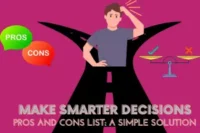Conquering FOMO: Strategies to Reduce Fear of Missing Out During Your Detox
Published: 27/07/2025
Imagine this: You’ve finally decided to take the plunge—no more endless scrolling, no more notifications, just you and the world around you. You’re ready to unplug, to take a break from the constant buzz of your phone. But just as you silence your devices, a thought sneaks in: What am I missing out on?
The urge to check your phone starts creeping in. You wonder what your friends are up to, whether there’s a trending news story you haven’t seen yet, or if a new post could be waiting for your attention. You begin to feel that subtle anxiety—the fear of missing out (FOMO) on something important.
Sound familiar? You’re not alone in this. FOMO has become a near-constant companion in our digital lives, and it tends to be at its strongest when we attempt to disconnect. The idea of missing out on important social updates or the latest information can make even the most committed detoxer second-guess their decision. It’s not just about feeling a little uneasy; it can feel like an emotional rollercoaster.
But here’s the good news: You can conquer this struggle.
In this post, we’re going beyond just starting a detox—we’re focusing on the core emotional hurdle that many face: FOMO. This isn’t just about unplugging; it’s about sustaining your detox and finding peace without the nagging thought that you’re missing out.
We’ll walk you through practical, actionable strategies that are designed to help you manage and reduce FOMO while you’re unplugging. Whether you’re in the middle of your detox or preparing for one, this guide will ensure that you can disconnect in a way that allows you to reconnect with yourself, your thoughts, and your present life—without the anxiety of what’s going on out there.
| Here’s a glimpse of what you’ll learn: |
|---|
|
Ready to take control of your detox journey and find real peace? Let’s dive in!
Understanding the “Detox FOMO”: Why It Hits Hardest When You Unplug
FOMO, or Fear of Missing Out, is a feeling many of us are all too familiar with. It’s that nagging anxiety when you feel like you’re being left out of something important or exciting. It could be a social event, an update on the latest trend, or simply not knowing what’s going on in the world around you. For many of us, it’s closely tied to our relationship with social media, where updates are constant and instant.
But during a digital detox, this feeling tends to intensify. Detox FOMO occurs when you intentionally unplug and try to disconnect from the constant stream of digital updates. The sudden lack of notifications, posts, and messages can create a feeling of void—a sense that you’re missing out on something important. It’s not just about missing the latest memes or viral videos; it’s about breaking the loop of habit that has conditioned your brain to check your phone regularly.

What is detox FOMO?
It’s the heightened fear of being disconnected from the digital world during a detox, leading to anxiety about missing out on social connections, important updates, or the fear of not being part of what’s happening online.
The Psychological Roots Behind Your Urges
You might be wondering: Why does it feel so hard to disconnect, even when you know it’s good for you? To understand this, we need to look at the psychology behind it.
Instinctual Need to Connect
Humans are inherently social creatures. Our brains are wired to crave connection, and historically, this was essential for survival. Being part of a group meant better protection, access to resources, and increased chances of survival. This instinct to stay connected still influences our behavior today, especially in the digital age where social media offers us an easy and constant way to stay in touch.
When we cut off that stream of constant communication and updates—like during a detox—the instinct to connect kicks in stronger than ever. It feels unnatural to not be in the loop, and this instinct can create a sense of unease.
Dopamine Loop Disruption
Another factor behind detox FOMO is the dopamine reward system. Every time we check our phone, post an update, or receive a like or notification, our brain releases a small burst of dopamine—the “feel-good” chemical. Over time, our brains become conditioned to expect this instant gratification, leading to a cycle of compulsive checking.
When you break this cycle by going on a digital detox, your brain craves that dopamine hit, and this withdrawal can feel uncomfortable. The longer you stay unplugged, the more intense the craving can feel—this is detox FOMO in action. Your brain is longing for those digital rewards, making it harder to resist the urge to check your devices.
The “FOMO Spin”
This craving can quickly spiral. When we check our phones due to detox FOMO, we often end up getting pulled back into social media, looking for reassurance or connection. This becomes a vicious cycle, where the act of checking the phone to ease anxiety only reinforces the fear of missing out. We’re constantly chasing that next notification or update, believing it will fill the void, but it rarely does.
It’s what we call the “FOMO spin”—a never-ending cycle of checking social media because of the anxiety that comes from feeling left out, which in turn increases the feeling of isolation and loneliness. Breaking free from this cycle is tough, but it’s key to finding peace during your detox.
Expert Insight: How Our Brains Are Wired for Connection
Our brains have evolved to prioritize social connection, and social media has tapped into this deeply ingrained desire. Platforms are designed to keep us engaged by exploiting our need for validation and social belonging. Whether it’s through likes, comments, or shares, the reward systems on these platforms keep us hooked.
This is why detox FOMO feels so intense: our brains are conditioned to be constantly connected. Social media has simply amplified this natural instinct, turning it into a nearly irresistible force.
Understanding the psychological roots of your detox FOMO is the first step in overcoming it. Recognizing that these urges are rooted in deep-seated biological needs and digital habits can help you manage them with more compassion and awareness.
In the next section, we’ll dive into actionable strategies for preparing your mind to conquer these urges and set yourself up for a successful digital detox.
Proactive Strategies: Preparing Your Mind for a FOMO-Free Detox
Before you even start your detox, there’s an essential step that will help you set yourself up for success: preparing your mind. If you dive into the detox without mentally conditioning yourself, the process can feel daunting. FOMO may hit harder than you expect. But by acknowledging and accepting this challenge upfront, you’re already one step ahead.
“Admitting the Problem” & Acceptance
The first and most important thing is acknowledging your dependency. You’re not weak or alone in feeling anxious when unplugging; it’s a common experience. In fact, it’s a sign that the digital world has shaped your daily habits in ways you might not have fully realized. Accepting that you have a tendency to check your phone compulsively, or that you feel like you’re missing out, is the first step toward regaining control.
By recognizing this, you make peace with the fact that it’s okay to not be everywhere at all times. Everyone is on their own journey, and social media often distorts what’s real. Understanding this will help you detach from the pressure to keep up with it all.
This step is about psychological readiness: acknowledging that breaking your habit will take time, and that initial discomfort is normal.
Define Your “Why” Clearly
Ask yourself: Why am I doing this detox? Whether it’s to reclaim your focus, improve your sleep, deepen your real-world connections, or just find a sense of peace in the quiet, getting clear on your “why” will help you stay grounded when FOMO strikes.

Revisit your reasons throughout your detox. If you start feeling the pull to check your phone, remind yourself why you started this process in the first place. Your “why” is your anchor in moments of temptation. Write it down, keep it visible, and allow it to guide you through the discomfort of unplugging.
Manage Expectations
Understand that detoxing is not about eliminating FOMO overnight. The initial discomfort you feel is simply the habit-breaking phase. It’s normal for your mind to crave the digital dopamine that you’ve been accustomed to. Give yourself grace, knowing that the first few days (or even weeks) may be the hardest. But as time goes on, the discomfort will subside, and your mind will adjust to the new routine.
You are in the process of creating a new relationship with technology—one that’s more balanced and intentional. It’s an investment in your mental and emotional well-being, even if it doesn’t feel easy right away.
Curating Your Digital Environment (Before You Unplug)
A detox isn’t just about turning off your devices—it’s about setting yourself up for a successful, sustainable break from digital noise. One way to do this is by curating your digital environment ahead of time.
Unfollow or Mute Triggers
Before you unplug, take a moment to identify the accounts or platforms that consistently trigger FOMO. These could be friends who always seem to be at the hottest events, influencers with perfectly curated lives, or brands that make you feel like you’re missing out on the latest trends. The goal here is to reduce unnecessary temptation.
You don’t need to unfollow everyone—just mute or unfollow the accounts that contribute to your feelings of inadequacy or anxiety. You can always reconnect with them later. The key is to curate a feed that aligns with your goals during the detox, which is peace, presence, and reconnection with yourself.
Set Clear Boundaries (With Others)
Let the people in your life know that you’re taking a break from social media or your devices. Setting clear boundaries with others about your detox is crucial. This not only helps manage external pressure (such as “Did you see my post?” or “Where have you been?”), but it also ensures that you’re not accidentally pulled back into the digital world.
It’s okay to let people know that you’re focusing on yourself for a while. A brief text or message explaining your digital detox can go a long way in reducing any misunderstandings.
Expert Tip: Create a “Digital Detox Contract”
If you’re detoxing with a partner, family, or a group of friends, consider creating a Digital Detox Contract. This could be a simple agreement where everyone sets their own expectations and commitments for unplugging. It could include things like no phones during dinner, scheduled check-ins for urgent messages only, or an agreed-upon time to check back into social media.
This contract not only makes the detox feel like a shared commitment but also holds everyone accountable to the process. You’re more likely to stick to your detox goals when you’re in it together with others who understand the importance of unplugging.
By taking these proactive steps before you begin your detox, you’re setting yourself up for a smoother, more successful experience. You’ve already minimized potential triggers, clarified your goals, and set boundaries to protect your peace. Now, when FOMO hits, you’ll be mentally prepared to handle it with more resilience and ease.
In the next section, we’ll look at strategies you can use during your detox to actively manage those FOMO moments and keep yourself on track.
In-Detox Strategies: Active Management When FOMO Strikes
Even with all the preparation, FOMO can still rear its head while you’re in the middle of your detox. But don’t worry! This is where active strategies come in—tools that can help you manage the urge to check your phone and stick to your detox. Let’s dive into practical techniques that will help you ride the wave of FOMO and turn those moments into opportunities for growth and self-discovery.
Mastering the Urge: Mindfulness & Cognitive Reappraisal
When FOMO strikes, it’s easy to feel like you’re being swept away by the tide of temptation. But what if you could learn to ride those waves instead of being drowned by them?
Urge Surfing
Urge surfing is a mindfulness technique that helps you manage cravings and discomfort in a healthy, controlled way. Think of your craving to check your phone like a wave in the ocean. At first, it’s intense and powerful, but if you allow yourself to simply feel it without acting on it, the wave will eventually subside.
Here’s a simple exercise to practice urge surfing:
- Pause for a moment when you feel the urge to check your phone. Close your eyes and take a deep breath.
- Visualize the craving as a wave building up inside you—growing stronger and stronger.
- Ride the wave by simply observing it. Acknowledge that it’s there, but don’t let it control you. Feel the urge rise and then recede as you focus on your breath.
- Redirect your attention. Once the wave has passed, gently shift your focus back to what you’re doing, like reading a book, taking a walk, or simply enjoying the stillness.
With practice, you’ll find that cravings lose their power and that you’re capable of letting them pass without giving in.
Cognitive Reappraisal
Sometimes, the urge to check your phone is driven by distorted thoughts. You might think, “Everyone’s having fun without me” or “I’m missing out on something important.” These thoughts can feel urgent and overwhelming. However, cognitive reappraisal is a powerful tool to challenge those distorted beliefs and replace them with more realistic, balanced thoughts.
Here’s how you can do it:
- When a thought like “Everyone’s having fun without me” pops up, pause and reframe it: “Social media isn’t real life. Most of what I see is a curated version of reality.”
- When you feel the urge to check for fear of missing out, remind yourself that your peace is more valuable. “What I’m gaining from this detox—clarity, focus, real connection—is more fulfilling than anything I might see on my phone.”
- Challenge your assumptions by reminding yourself that FOMO is often rooted in comparison. What you see online is not the full picture. People are not always having more fun or living better lives—they’re just showing you the highlights.
“Switch Off the Chatter”
Sometimes, the best way to reduce temptation is by limiting your phone’s appeal. You can do this by making your phone less distracting and less enticing to check.

Here are some practical tips:
- Turn off notifications: Disable non-essential notifications to prevent your phone from constantly buzzing. When you’re unplugging, you don’t need to be notified every time someone likes your post or comments on your photo.
- Use grayscale mode: By switching your phone to a “black-and-white” screen, you’ll make it less visually appealing and less likely to lure you in for a quick scroll.
- Set boundaries: Use your phone only for specific purposes—like checking the weather or setting an alarm—during your detox hours.
These small changes help reduce the temptation and keep your detox on track.
Real-World Example
Take Sarah, for example. Sarah started her detox with a strong resolve but found herself constantly thinking about what she might be missing out on—especially on weekends when her friends were posting about parties and outings. Instead of giving in, she practiced urge surfing, reminding herself that the urge to check her phone was temporary. With every passing wave, Sarah noticed the cravings lessened. She also applied cognitive reappraisal, telling herself, “What I’m gaining by focusing on myself is more valuable than what’s happening on social media.” By the end of the weekend, Sarah was feeling more present and peaceful than she had in a long time.
Redefining “Missing Out”: Focusing on What You’re Gaining
Instead of focusing on what you’re missing out on, shift your perspective and think about what you’re gaining during your detox. This subtle but powerful shift in mindset can help you feel more empowered and at peace.
The Power of Presence
One of the greatest rewards of unplugging is learning to be present in the moment. When we’re constantly connected, we miss out on the richness of our current experiences. Whether it’s savoring a cup of coffee, having an uninterrupted conversation, or taking in the beauty of nature, being present can significantly boost your well-being.

Embrace the small moments and immerse yourself in your surroundings. The simple act of paying attention to your environment can help shift your focus away from the digital world and into the here and now.
Mindfulness in Mundane Activities
You don’t have to be doing something extraordinary to enjoy the moment. Even mundane tasks, like washing dishes or folding laundry, can become opportunities for mindfulness. Instead of thinking about what’s happening on your phone, try focusing on the sensations of the task at hand. Feel the warmth of the water, the texture of the dish, or the rhythm of your movements.
As you practice mindfulness, you’ll begin to realize that you don’t need external stimulation to feel fulfilled. You can find joy and presence in the simplest of actions.
Embrace Boredom as a Catalyst
In our hyper-connected world, boredom is often seen as something to avoid. But during your detox, try to reframe boredom as an opportunity for creativity and self-discovery. Without the constant distractions, your mind is free to wander and explore new ideas. Boredom can be a fertile ground for inspiration, allowing you to rediscover old hobbies, learn something new, or simply think deeply about your goals.
Take Emily, for example. In the first few days of her detox, she struggled with boredom and the feeling that she wasn’t “doing enough.” But after embracing the quiet, Emily rediscovered her love for painting—something she hadn’t done in years. The freedom from constant distractions gave her the space to explore her creativity in ways she hadn’t anticipated.
Strategic Reconnection & Real-World Engagement
While it’s important to disconnect, it’s also okay to strategically reconnect—especially if you’re easing into the detox rather than going cold turkey.
Scheduled “Check-Ins” (Optional & Controlled)
If you’re finding the detox too challenging, consider scheduled, short social media check-ins. These check-ins can be as brief as 15 minutes a day, perhaps during your commute or right before bed. The key is to set boundaries and stick to them. This approach allows you to stay connected while keeping your detox goals intact.
Prioritize In-Person Connections
One of the most fulfilling aspects of a detox is rediscovering the importance of real-world interactions. Instead of scrolling through your phone, prioritize meaningful, face-to-face connections. Schedule coffee dates, call friends or family, or join community activities. These in-person moments offer genuine connection that social media often can’t match.
The “Device Basket”
If you’re detoxing as a group (e.g., with family or friends), consider implementing a “Device Basket” rule. Everyone places their phones in a basket when together, helping to minimize distractions and promote deeper conversations. This can be especially effective for shared meals or family time.
Expert Tip
When you reconnect with others, focus on quality over quantity. Rather than trying to engage with everyone on social media, prioritize deep, meaningful conversations with a few close people. A few genuine interactions are more rewarding than endless scrolling and fleeting interactions online.
By actively managing FOMO during your detox, you’ll gain more than just a break from technology—you’ll rediscover the richness of the present moment and foster connections that go beyond the digital world. In the next section, we’ll explore expert tips and common mistakes to avoid during your detox journey.
Expert Tips & Common Mistakes to Avoid During Your Detox
The journey to conquering FOMO during a digital detox isn’t always smooth, but with the right strategies and mindset, you can set yourself up for lasting success. Here are expert-backed tips to help you along the way, as well as some common pitfalls to avoid that could derail your progress.
Boost Self-Esteem
A major challenge during any detox is dealing with feelings of inadequacy or comparison. Social media often fosters a mindset of comparison, where we measure ourselves against curated, idealized images of others’ lives. This can trigger negative self-talk, which only feeds into FOMO. To break this cycle, focus on boosting your self-esteem through positive self-talk.
Here are a few strategies to counteract the comparison trap:
- List your achievements: Take time to reflect on what you’ve accomplished. This can be as simple as finishing a book or getting through a challenging week without checking your phone.
- Learn new skills: Use your detox as an opportunity to pick up a new hobby or skill. This not only shifts your focus away from digital comparison, but it also helps you feel more confident and accomplished.
- Reframe your thoughts: Instead of thinking, “I’m missing out,” remind yourself, “I’m choosing something more valuable—my peace and well-being.”
By regularly reinforcing your own strengths, you’ll build a solid sense of self-worth that isn’t dependent on external validation.
Appreciate Your Own Achievements
As you work through your detox, don’t forget to celebrate the small wins. It’s easy to feel like you’re not doing enough or not achieving enough when you’re not constantly plugged into the digital world. But the truth is, your detox is an achievement in itself.
Whether you’ve gone a day without checking social media, completed a long-awaited project, or simply enjoyed a quiet moment of reflection, these wins are worth acknowledging. Take pride in the fact that you’re learning to live more mindfully and reconnecting with the real world.
Self-Help Literacy for SNS Use
One of the most valuable things you can do during and after your detox is to educate yourself on how to use social media in a healthier way. After your detox, it can be easy to fall back into old habits, but you don’t have to.
Here’s how to approach social media mindfully post-detox:
- Set boundaries: Limit your time on social media to specific hours or use apps that track your usage.
- Follow accounts that align with your values: Curate a feed that inspires and uplifts you, rather than causing anxiety or comparison.
- Practice self-awareness: Before you scroll, check in with yourself. Are you looking for connection or just filling a void?
Educating yourself on these practices ensures that your relationship with social media stays balanced and fulfilling long after the detox ends.
Pitfalls to Sidestep
While detoxing can be incredibly rewarding, there are some common mistakes that can trip you up if you’re not careful. Here are the most common pitfalls to watch out for:
Don’t Go Cold Turkey Without Preparation
Some people succeed with a cold-turkey approach to their detox, but for many, this can be overwhelming without adequate preparation. Jumping straight into a full detox without first mentally preparing yourself can lead to heightened anxiety and an urge to give up quickly.
Instead, take a more gradual approach, if necessary:
- Start by reducing your screen time gradually.
- Set specific hours for your detox and work up to longer periods.
- Begin by taking breaks during certain hours of the day (like during meals or before bed).
By easing into your detox, you give yourself the time to adjust and build the resilience needed to manage FOMO.
Avoiding the “FOMO Swing-Back”
Another common mistake is experiencing a “FOMO swing-back” after your detox ends. This happens when you overcompensate for the time you spent unplugged and dive right back into your digital habits—often with an overwhelming sense of urgency.
To prevent this, ease back into digital life:
- Start slow: Reintroduce social media and emails gradually. Resist the urge to immediately check everything you missed.
- Be mindful: Approach social media with the same mindfulness you practiced during your detox. Set clear boundaries to avoid slipping back into old habits.
- Check in with yourself: Reflect regularly on how you’re feeling and adjust your usage accordingly.
This approach helps you avoid the burnout that often comes with overconsumption after a detox.
Neglecting Self-Care
While your detox focuses on reducing screen time, it’s also essential to maintain self-care during this period. Your mental and physical well-being are deeply connected to your digital habits, and neglecting the basics of self-care—such as healthy sleep, diet, and exercise—can make it harder to manage FOMO.
Here’s how to ensure that self-care is part of your detox:
- Sleep: Prioritize quality sleep, as it’s essential for emotional regulation and stress management.
- Exercise: Engage in regular physical activity to reduce anxiety and boost your mood.
- Nutrition: Eat nourishing foods that support your mental clarity and energy.
By focusing on these fundamental aspects of self-care, you’ll be in a much better position to handle the emotional challenges of your detox.
Ignoring Serious Mental Health Signals
It’s important to listen to your mental health during the detox. If you find that FOMO or anxiety is becoming overwhelming, it might be time to seek professional support. A detox is meant to help you feel more connected and at peace, but if it leads to feelings of isolation, depression, or extreme anxiety, it’s important to address those concerns.
If you find yourself struggling, don’t hesitate to reach out to a therapist or counselor who can help guide you through this process. Mental health is the foundation for everything else in life, and getting support is a sign of strength, not weakness.
By following these expert tips and avoiding common pitfalls, you’ll be better equipped to navigate your detox journey with success. Remember, a detox is not just about unplugging—it’s about reconnecting with yourself, your environment, and what truly matters in life.
In the next section, we’ll wrap things up and help you stay empowered as you continue on your path to a truly liberated digital life.
Conclusion: Your Path to a Truly Liberated Digital Life
As you wrap up your journey toward conquering FOMO during your digital detox, let’s recap the essential strategies that will help you stay grounded and empowered:
- Pre-detox mental conditioning: Acknowledge your dependency on digital devices and set clear intentions for why you’re detoxing.
- Curating your digital environment: Unfollow or mute accounts that trigger FOMO and set clear boundaries with others to protect your peace.
- Active management strategies: Use mindfulness techniques like urge surfing and cognitive reappraisal to handle FOMO when it arises. Focus on what you’re gaining through presence and real-world connections.
- Expert-backed tips: Boost self-esteem, appreciate your achievements, and practice mindful social media use after your detox. Avoid common pitfalls like going cold turkey without preparation or neglecting self-care.
By embracing these strategies, you’re not just temporarily reducing your screen time—you’re reclaiming your mental clarity, peace, and genuine connection to the world around you. Mastering this challenge means you’ll no longer feel controlled by the constant pull of digital distractions. You’ll create a healthier, more intentional relationship with technology, allowing you to live more fully in the present.
You have the power to take control of your digital life and escape the exhausting cycle of FOMO. This journey is about rediscovering what truly matters to you, beyond the digital noise. You don’t need to be everywhere at once to feel connected or fulfilled. True freedom lies in giving yourself permission to be present and embrace the quiet moments that bring real peace.
Ready to take control? Start applying these strategies to your digital detox today and experience the difference! Share your detox experiences and tips in the comments below—we’d love to hear how these methods are working for you and how you’ve found your own path to digital freedom.
It’s time to break free from the “FOMO spin” and create a life that feels truly aligned with your values. The power to detox is in your hands!
Your Top Questions About Conquering Detox FOMO, Answered
FOMO, or Fear of Missing Out, is the anxiety or dread that you’re missing out on something important, often triggered by social media. This constant comparison to others’ curated lives can negatively affect your mental health, leading to stress, anxiety, and feelings of inadequacy.
If you find yourself constantly checking your phone, feeling overwhelmed by notifications, or experiencing anxiety when disconnected, it might be time for a digital detox. If social media is interfering with your mental well-being, focus, or real-life relationships, taking a break is a great option.
Yes! A digital detox can break the cycle of comparison and constant notifications, allowing you to rediscover peace and presence. It helps you step away from the “always on” culture, reducing anxiety and giving you a clearer perspective on what’s truly important in your life.
There’s no one-size-fits-all answer. A digital detox could last anywhere from a few hours to a few days or even weeks. The key is to set a goal that aligns with your needs—whether that’s a weekend break, a week, or a longer retreat. Start small if needed, and gradually increase the duration as you become more comfortable.
You can maintain connections by scheduling phone calls or in-person meetups. Let your friends and family know about your detox so they don’t worry. This ensures that you’re still nurturing relationships without the constant digital distractions.
When the urge strikes, practice urge surfing—visualize the craving as a wave that will pass. Use mindfulness or cognitive reappraisal techniques to shift your focus back to the present. Engage in activities that ground you, like reading, walking, or journaling, to help manage the discomfort.
It depends on your goals. If you’re aiming for a full detox, it’s best to avoid social media. However, if you’re doing a partial detox, consider setting clear boundaries—like limiting social media to a set time each day or using it only for personal connections.
A digital detox helps reduce stress, anxiety, and feelings of FOMO. It promotes mental clarity, improves focus, and fosters a deeper sense of self-awareness and personal growth. By disconnecting from digital noise, you can reconnect with yourself and your real-world surroundings.
Start by acknowledging your dependence on digital devices and setting clear goals for your detox. Curate your digital environment by muting or unfollowing accounts that trigger FOMO. Inform your friends and family about your detox to manage expectations and reduce external pressure.
During your detox, engage in activities like reading, journaling, exercising, cooking, or spending time outdoors. These activities allow you to be present and connected to the moment, providing a sense of accomplishment and fulfillment that digital devices can’t offer.

- Be Respectful
- Stay Relevant
- Stay Positive
- True Feedback
- Encourage Discussion
- Avoid Spamming
- No Fake News
- Don't Copy-Paste
- No Personal Attacks



- Be Respectful
- Stay Relevant
- Stay Positive
- True Feedback
- Encourage Discussion
- Avoid Spamming
- No Fake News
- Don't Copy-Paste
- No Personal Attacks





